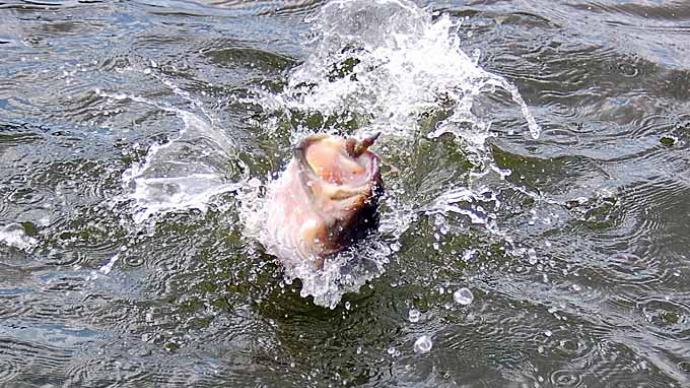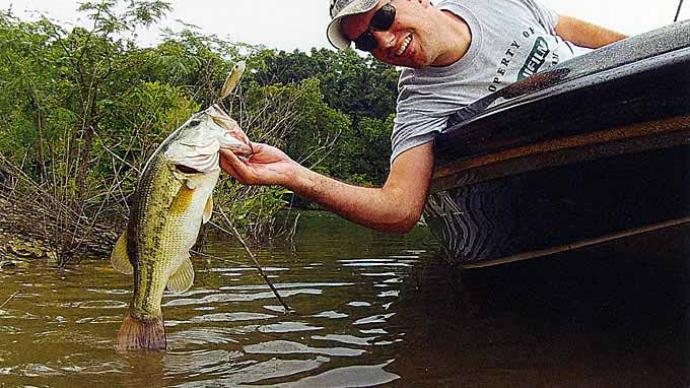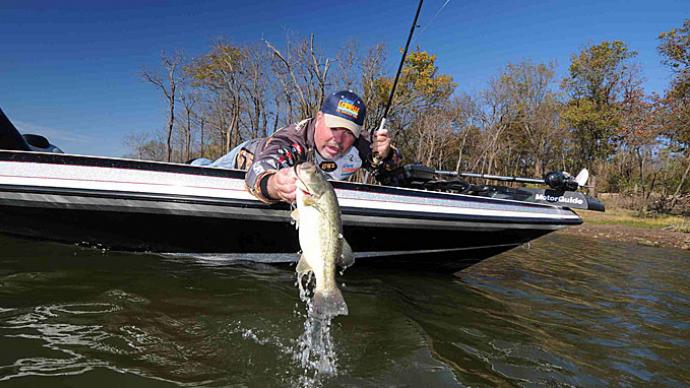One of the most important tools every bass angler should have is a working knowledge of the basics of fishing plastic worms. Throughout bass fishing history, some of the greatest wins have been because of the plastic worm. Those of you who are new to sport need to know about worm fishing and some of us who have been involved for years sometimes need to look back at the basics to find our game again.
When we talk about the basics of worm fishing, we have to break it down into the various styles of how to present a plastic worm. All of the basic techniques are necessary because you have to adjust your tools to fit each body of water. Each lake is different, various temperatures, structure and water temperatures require the use of different tools.
First, let's understand that plastic worms can catch bass anywhere, any time. How they are rigged makes the difference.
To start out with, the Texas-rigged worm is the basic presentation that still works today. A Texas-rigged worm is a weedless rig. In the weeds and rocks, it is one of the best methods available. You need a sliding sinker and a worm hook, of course, and you can use various weights and hook sizes. The basic rig would be a 1/8- to 1/4-ounce weight in a traditional bullet style. Usually I stick with a 2/0 hook but I will adjust depending on the size of my worm. You can drop down for smaller finesse baits or upsize for the really big worms.
I prefer to use an offset hook because it helps to keep the worm in place. Thread the head of the plastic worm about 1/4 of an inch into the hook, pull it out and twist the head of the worm around and slide up the shank to the offset and then put the hook point all the way through the worm. This will keep the worm straight and will virtually eliminate line twist. Then, just slide the tip of the hook back into the plastic to give it a weedless quality.
The Texas rig is still used by the best professionals all over the country. It can be fished virtually anywhere. And, it still wins tournaments. Another advantage of the Texas rig is how easy it is to change your lure sizes and colors while using the same basic rig.
The next category, one that is extremely well suited for the beginning angler, is the Carolina and Split Shot rig. I group them in the same category because they are both very similar with the exception of lure, line and hook size. You tie a hook on the line and put a worm on it the same as you would a Texas rig, but the weight is separated from the hook, placed up the line from the bait. In a Carolina rig, you have a sliding weight and possibly a bead on the line and then a barrel swivel tied to the end of the line to keep the weight in place. Then you tie a leader to the bottom of the swivel where you tie your hook. The Split Shot is for light line and you tie on the lure and crimp a small split shot on the line a foot or two above the bait.
Either way, the idea is to get the bait down and utilize the weight to stir things up on the bottom and attract attention to your lure. Basically, you throw it out and drag it. When a fish takes it you will feel the pull of the fish, which is why this technique is so good for beginning anglers.
The next category is the dropshot. Here you are reversing everything from the previous techniques, much like catfishing. Here you attach the weight to the bottom of the line and tie the lure above the weight. It's a fairly new technique that has really been catching a lot of fish.
You basically tie an offset hook onto the line using a Palomar knot with a long tag end. The tag end may be any length depending on what the fish want. Eight to 12 inches is usually a good starting point. At the end of the tag end you place a weight to get the bait to the bottom. You throw the whole rig out, allow it to go to the bottom, drag it along and shake it a little bit. The worm sticks straight out in front of the face of the fish. It's a very simple way to fish because the worm is doing all the work.
The standard is a 3/16-ounce weight but of course you can adjust the weight according to the conditions.
The dropshot creates a superb horizontal presentation and the lure is presented more naturally. A shad doesn't go up and down, they stay on an even plane, much like the dropshot worm.
One of the most popular styles in the West is an exposed jig head or dart head style of fishing. Using manufactured jig or dart heads, that come in all sizes and weights. Generally you will use a 1/4-ounce dart head with a 1/0 or 2/0 hook and thread a worm onto the hook and expose the hook. This is not a weedless rig and most anglers use it in rocky areas that don't have a presence of brush. It's a great rig to use on rock drop offs and you don't have to worry about the hookset because it is an open hook design.
When to use each style is determined by several factors. If I'm casting to specific locations like a shady spot or a tree, then I'll use either a Texas rig or a darthead. Because you can place them precisely where you want them. If I'm trying to cover a lot of water quickly, I'll use either a Carolina rig or a darthead because you are throwing out and dragging around. This works exceptionally well on large flats.
If the fish are deep, 30 to 50-feet or so, and I need to place my bait in a precise location, then I'll go to the dropshot. That way I can drop the bait right in front of their face and tease the fish into biting.
Some anglers will find a certain style they prefer and will have luck with it, but if you want to be competitive, you have to understand all methods of worm fishing and be ready to make a change if necessary. You have to be very versatile.
Reprinted with permission from Bass West Magazine




